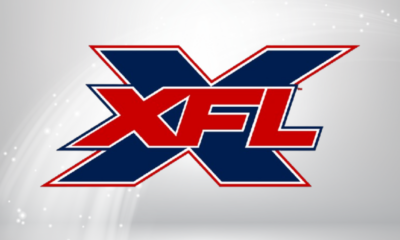
Football in the United States has always been dominated by NFL teams, naturally. However, the phenomenon extends beyond just this premier league. Historically, several leagues have attempted to share the limelight, each with its brand of excitement and innovation.
Two of the most memorable names among these leagues are the XFL and USFL. Both have had unique journeys, with periods of closure and revival, each striving to offer a distinctive viewing experience for football enthusiasts.
This blog post delves into the history, strengths, and prospects of the XFL and USFL, highlighting what makes each one special.
The XFL’s Journey
The XFL was originally launched in 2001 by wrestling magnate Vince McMahon. Merging the flamboyance of professional wrestling with the grit of football, the XFL aimed to provide an edgier, more entertaining counterpart to the NFL. However, its initial venture was short-lived, lasting just one season due to a mix of poor ratings, operational challenges, and criticisms regarding its quality of play.
Fast forward to 2020, and the XFL was relaunched with a renewed vision. This version aimed to focus more on football and less on entertainment gimmicks. With faster game rules, transparency in video reviews, and an emphasis on fan engagement, the new XFL showcased games that were both thrilling and innovative. However, the unexpected hit of the COVID-19 pandemic halted the league’s momentum, leading it to declare bankruptcy after just five weeks of play.
The USFL’s Legacy
The United States Football League (USFL) emerged in the 1980s as a spring and summer alternative to the NFL. While the league faced its challenges, it had notable successes, including attracting high-profile players such as Herschel Walker and Steve Young. One of the league’s strengths was its ability to be a legitimate competitor in terms of talent, with some players later enjoying illustrious careers in the NFL.
However, the USFL’s ambition ultimately became its downfall. When league owners voted to move the schedule to fall to directly compete with the NFL, it led to a series of legal and financial complications. By 1986, after just three seasons, the USFL folded.
The Strengths and Innovations
While both leagues faced their challenges, they brought innovation and excitement to the football world. The XFL’s innovations like the “sky judge”, a booth official using video to correct clear errors in real-time, and the “shootout” style overtime, where each team got five one-play possessions to score from the 5-yard line, garnered attention and appreciation.
The USFL, on the other hand, was ahead of its time in terms of player salaries and team locations. It tapped into markets that were hungry for football, leading to a passionate following. Their playoff structure and talent scouting also set the stage for some epic gridiron battles.
The Prospects and What Lies Ahead
There have been murmurs about the return of the USFL, rekindling hopes of its past glory. While the specifics remain uncertain, football fans are intrigued by the prospect of another league revival. On the other hand, the XFL, under new ownership including Dwayne “The Rock” Johnson, also has plans to return, promising an improved version building on its 2020 iteration.
Both leagues represent more than just an alternative to the NFL; they embody the spirit of innovation, the resilience to bounce back, and the passion that is inherent to American football. With the right strategies, financial backing, and fan engagement, there’s no reason why they can’t find a permanent place in the hearts of football enthusiasts.
Conclusion
The tales of the XFL and USFL serve as a testament to the indomitable spirit of football in America. They remind us that while the NFL may be the giant in the room, there’s always room for more football, especially when it’s presented with a fresh twist. As both leagues look towards the future, fans across the country wait with bated breath, hopeful for another chapter in these storied franchises. Regardless of the outcome, the legacy of the XFL and USFL remains intact, proving that in the world of football, passion and innovation always find a way to the end zone.
Unleash the Action: Sign up for XFL Insider and Fuel Your Passion for Football!

USFL and XFL Merger: A Deep Dive into the Historic Collaboration
Latest Podcast
-


XFL Podcast
/ 1 year agoXFL-USFL Merger Insights: Houston’s Future, Draft News, Player Movement – Ep. 216
Welcome to Episode 216 of the “XFL Week In Review,” your premier destination for...
By Mark Perry






